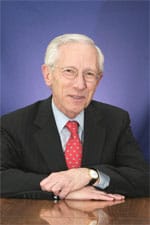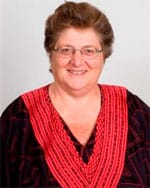MIDDLE EAST & AFRICA
Angola
José de Lima Massano
Grade: B
The performance of Angola’s economy depends more on oil prices than on monetary policy. José de Lima Massano, former CEO of Banco Africano de Investimentos, was appointed central bank governor in October 2010. He moved quickly to establish credibility by raising the benchmark rediscount rate by five percentage points to 25% in the face of stubbornly high inflation. In April 2011 the National Bank of Angola cut the rediscount rate back to 20%, as inflation showed a declining trend. In June 2011 the central bank banned local banks from making loans in foreign currencies in an effort to limit the role of the dollar and increase use of the national currency, the kwanza. Standard & Poor’s raised Angola’s debt rating to BB- on July 12. The rating agency cited improvement in the country’s fiscal and external imbalances due to surging oil prices. According to the central bank, Angola’s net foreign currency reserves reached $21.4 billion on June 30.
Israel

Stanley Fischer
Grade: A
Stanley Fischer is widely credited with enabling Israel to largely escape the global economic crisis. The Bank of Israel has intervened heavily in the foreign exchange market. In January 2011 the central bank imposed a reporting obligation on Israeli residents engaging in transactions in foreign currency derivatives. It also imposed a reserve requirement on banks for foreign currency derivative transactions with nonresidents. The Bank of Israel left its benchmark rate for August 2011 unchanged at 3.25%, following four rate hikes earlier this year totaling 125 basis points. Fischer submitted an application in June 2011 to become the next managing director of the International Monetary Fund. He previously served as first deputy director at the IMF. The IMF board rejected his application, however, on the basis of age. IMF rules stipulate that an incoming chief must be no older than 65, and Fischer is 67.
Bahrain
Rasheed Mohammed Al Maraj
Grade: B-
Bahrain is a small, open economy in which exports account for about 96% of GDP, according to figures from the World Bank. Monetary policy is centered on the exchange rate. The Bahraini dinar is pegged to the dollar, and interest rates are closely aligned to US rates. The Central Bank of Bahrain is also the single integrated regulator of Bahrain’s financial industry. It was criticized during the financial crisis for failing to recognize and prevent banks from becoming overexposed to real estate lending.
The political turmoil earlier this year triggered a series of downgrades by rating agencies. Central bank governor Rasheed Mohammed Al Maraj refuted reports that international banks had fled during the unrest. During the first six months of this year, the central bank issued licenses for eight new financial institutions. Al Maraj says the country needs to move forward with economic reforms, such as the recent removal of a ban on unions and the introduction of unemployment benefits.
Kuwait
Salem AbdulAziz Al-Sabah
Grade: B
Kuwait needs to increase government spending and support the private sector to overcome imbalances in the oil-dependent economy, says central bank governor Sheikh Salem AbdulAziz Al-Sabah. Last year Kuwait’s parliament approved one of the most ambitious development plans in the region. With some $125 billion of spending, the five-year plan aims to turn Kuwait into a regional trade and financial center. On the monetary policy side, Kuwait’s key discount rate stands at 2.5%, after being lowered from 3% in February 2010. The central bank expects inflation in 2011 to hover between 5% and 6%, due in part to high global food prices.
Following its regular consultation with Kuwait in April and May, the International Monetary Fund said it expected the country’s monetary policy to remain accommodative owing to its currency basket peg, in which the dollar is highly weighted, and low global interest rates. Kuwait’s real gross domestic product is projected to grow by more than 5% this year.
Nigeria
Sanusi Lamido Sanusi
Grade: B+
The Central Bank of Nigeria increased interest rates aggressively this year to counter inflation, which has remained at double-digit levels. Sanusi Lamido Sanusi, a career banker, was named governor of the central bank in June 2009. After taking the post, he waited until September 2010 to raise the base rate a quarter-point to 6.5%. Sanusi’s first priority was to recapitalize the country’s insolvent banks and strengthen banking supervision.
Following its annual talks with the Nigerian government last November, the International Monetary Fund said Nigeria’s monetary policy should target inflation. The central bank obliged with a series of rate hikes that brought its main interest rate up to 8.75% on July 26, 2011. Sanusi said the July hike of 75 basis points was made in anticipation of huge injections of liquidity in the economy in coming months, after the government gave in to the labor movement’s demands to more than double minimum wages. The move was also designed to attract foreign capital inflows to build up reserves and protect the economy against possible external shocks, Sanusi said. Nigeria’s borrowing costs fell to the lowest in 10 months in July in the first bond auction since the central bank dropped requirements for investors to hold government debt for at least a year.
Lebanon
Riad Salameh
Grade: A
Riad Salameh at the Bank of Lebanon has maintained the stability of the country’s currency and interest rates amid much political turmoil in recent years. Salameh was reappointed to a new six-year term in July by the new government led by the Shiite Hezbollah movement. Salameh, a former Merrill Lynch investment banker, has imposed conservative balance-sheet requirements on the country’s banks.
In 2005 he issued an order barring any bank in Lebanon from investing in mortgage-backed securities. When a Lebanese bank was accused of money laundering by the US Treasury earlier this year, Salameh flew to Washington to defuse the crisis and maintain confidence in the Lebanese banking system. The central bank’s intervention rate, the Lebanon repo rate, has remained unchanged at 10% since late 2009. Lebanon’s inflation rate is expected to rise to about 7% in 2011 from less than 5% last year. Salameh said in June that the Bank of Lebanon plans to reduce inflation to achieve high growth rates in the economy. He attributes the increase in inflation to the rise in global oil and food prices and says it will control inflation by managing liquidity.
Qatar
Abdullah Saud Al-Thani
Grade: C-
Qatar’s monetary policy is confusing at best. The central bank of what may be the fastest-growing economy in the world is cutting interest rates to stimulate growth. Actually, central bank governor Sheikh Abdullah Saud Al-Thani didn’t give a reason for the half-point cut to 5% in April, which followed a slowdown in private sector lending. In August this was followed by another half percentage point cut, to 4.5%. Some analysts said that with the Qatari riyal pegged to the dollar, a large interest-rate differential with developed economies could lead to massive capital inflows that would fuel overheating of the economy.
Qatar is also encouraging its domestic banks to participate in financing development projects required for the country to host the football World Cup in 2022. With inflation creeping higher, fiscal policy remains accommodative because the government cannot reduce spending. Meanwhile, the central bank issued directives to conventional banks that have Islamic branches to stop opening new Islamic branches and to wind down their Islamic finance business by the end of 2011.
Conventional banks are permitted to transfer their Islamic portfolios to existing Islamic banks in Qatar. The central bank said the overlap of Islamic and non-Islamic activities of conventional banks was making it more difficult to implement monetary policy.
Saudi Arabia
Muhammad Al-Jasser
Grade: B+
The Saudi Arabian Monetary Agency, the central bank for the kingdom, keeps a tight rein on the banking system. Private sector credit is growing at a moderate pace, as the country’s well-capitalized and liquid banks meet growing demand, particularly from the manufacturing sector.
Saudi inflation is expected to pick up through mid-2012, as housing costs continue to rise. Saudi Arabia lacks a truly autonomous monetary policy, since its currency is pegged to the dollar. Governor Muhammad Al-Jasser has left interest rates unchanged since lowering the key repurchase rate by a half-point to 2% in January 2009. SAMA’s monetary policy is far more expansive than that of other Arab states in the Persian Gulf, as a result of Saudi Arabia’s higher inflation rate. The surge in oil prices and government spending is expected to boost the economy, the largest in the Arab world, by 6.5% in 2011.
South Africa

Gill Marcus
Grade: C
South Africa’s Reserve Bank has left its benchmark interest rate unchanged so far this year, despite the risks posed by rising inflation. The central bank cut the rate three times last year to 5.5%, “the lowest level in 30 years, to support a recovery in Africa’s biggest economy.” Gill Marcus, governor of the Reserve Bank, says the global economic outlook has deteriorated and that the domestic recovery has continued, but in a hesitant manner.
Domestic inflation is increasing in line with expectations, according to a July 21 statement by the monetary policy committee. The committee says this is driven mainly by cost-push pressures, but more broad-based pricing pressures are beginning to emerge. Inflation is expected to marginally break through the upper end of the target range in the final quarter of 2011 and to average 6.3% in the first quarter of 2012. The Reserve Bank expects South Africa’s GDP to increase by 3.7% this year and 3.9% in 2012. The central bank says it will not hesitate to respond to signs that threaten to move inflation out of the target range on a sustained basis.
|
|
||




